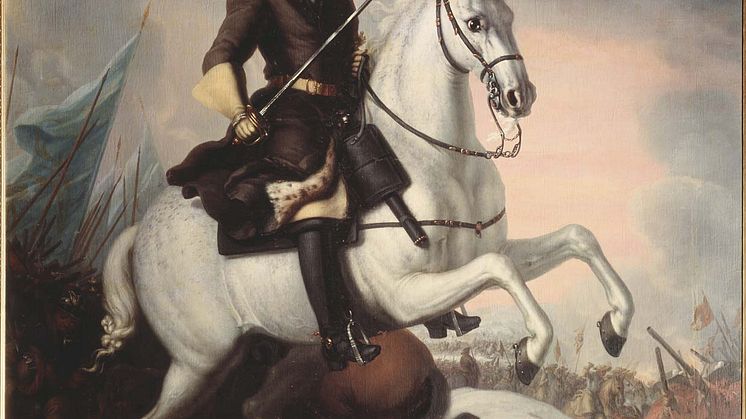Pressmeddelande -
The genetics of the white horse unravelled
The white horse is an icon for dignity which has had a huge impact on human culture across the world. An international team led by researchers at Uppsala University has now identified the mutation causing this spectacular trait and show that white horses carry an identical mutation that can be traced back to a common ancestor that lived thousands of years ago.
The study is interesting for medical research since this mutation also enhance the risk for melanoma. The paper is published on July 20 on the website of Nature Genetics.
The great majority of white horses carry the dominant mutation Greying with age. A Grey horse is born coloured (black, brown or chestnut) but the greying process starts already during its first year and they are normally completely white by six to eight years of age but the skin remains pigmented. Thus, the process resembles greying in humans but the process is ultrafast in these horses. The research presented now demonstrates that all Grey horses carry exactly the same mutation which must have been inherited from a common ancestor that lived thousands of years ago.
- It is a fascinating thought that once upon a time a horse was born that turned grey and subsequently white and the people that observed it were so fascinated by its spectacular appearance that they used the horse for breeding so that the mutation could be transmitted from generation to generation, says Leif Andersson who led the study. Today about one horse in ten carries the mutation for Greying with age.
It is obvious that humans across the world have greatly valued these white horses as documented by the rich collection of stories and paintings featuring white horses. In the paper the white horse as an icon for dignity is illustrated by reproducing a painting from the late 17th century of the Swedish king Karl XI on his white horse Brilliant.
The Grey horse is also very interesting from a medical point of view since the mutation also predisposes for development of melanoma. About 75% of Grey horses older than 15 years of age have a benign form of melanoma that in some cases develops into a malignant melanoma. Thus, the study reported today has also given new insight in a molecular pathway that may lead to tumour development.
- We propose that the Grey mutation stimulates growth of melanocytes and that this leads to a premature loss of the melanocyte stem cells needed for hair pigmentation whereas the mutation promotes an expansion of some of the melanocytes causing skin pigmentation, says Leif Andersson.
Domestic animals constitute extraordinary models for evolution of biological diversity as already recognized by Charles Darwin. The white horse is a beautiful illustration of the importance of regulatory mutations as a major underlying mechanism for phenotypic diversity within and between species. The Grey mutation does not change any protein structure but it affects the genetic regulation of two genes. The researchers found that the white horses carry an extra copy of a DNA segment located in one of these genes.
- It is very likely that regulatory mutations like the one we found in these white horses constitute the dominating class of mutations explaining differences between breeds of domestic animals as well as between species like humans and chimpanzee, concludes Leif Andersson.
Illustration: The Swedish king Karl XI on his horse Brilliant after the battle in Lund, December 4, 1676, painted by David Klöcker Ehrenstrahl. The photo can be published in news articles about this study, with credit to The National Museum of Fine Arts in Sweden.
For more information contact: Professor Leif Andersson, Department of Medical biochemistry and microbiology, Uppsala University, phone: +46 (0)18 471 4904, +46 (0)70-514 4904, e-mail: leif.andersson@imbim.uu.se
